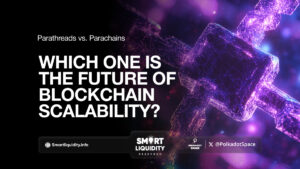The Polkadot Puzzle: Connecting Chains to Build the Decentralized Future


Introduction: Building a Connected Blockchain Ecosystem with the Polkadot Puzzle
The Polkadot Puzzle refers to the challenge of connecting independent blockchains to create a unified, decentralized network. This Polkadot Puzzle is solved by enabling multiple blockchains, called parachains, to connect and operate together securely within a shared ecosystem. Polkadot’s innovative approach to interoperability makes the Polkadot Puzzle a central focus for building the decentralized future of Web3.
How Polkadot Connects Blockchains
Polkadot’s architecture includes three main components working together:
Relay Chain: The central chain providing security and consensus across the network.
Parachains: Independent blockchains connected to the relay chain, each with its own features and governance.
Bridges: Special chains that link Polkadot to external blockchains like Ethereum and Bitcoin.
Together, these components enable different blockchains to communicate and share security, creating a robust and scalable network.
Why Interoperability Matters
Interoperability allows blockchains to transfer tokens, share data, and communicate seamlessly. Polkadot enables:
Cross-chain token transfers
Secure messaging through XCM (Cross-Consensus Messaging)
Shared security for all connected parachains
This technology allows developers to build scalable, integrated decentralized applications that benefit from a connected blockchain environment.
Real-World Examples on Polkadot
Several projects showcase Polkadot’s connected ecosystem:
Acala: A decentralized finance platform offering multi-chain liquidity.
Moonbeam: An Ethereum-compatible smart contract platform on Polkadot.
Phala Network: A privacy-focused cloud computing parachain.
These projects demonstrate the diverse use cases enabled by Polkadot’s advanced architecture.
Why Developers Choose Polkadot
Polkadot provides a powerful framework called Substrate to help developers build customized blockchains that integrate easily with the network. Benefits include:
Shared security provided by the relay chain
Seamless interoperability with other parachains
Scalability through parallel processing
These features make Polkadot an attractive platform for next-generation decentralized applications and projects.
Conclusion: Connecting Blockchains for a Decentralized Future
By enabling different blockchains to communicate, share security, and operate together, Polkadot is building the infrastructure for a truly decentralized future. Its innovative design allows projects and communities to thrive in an interoperable, scalable Web3 ecosystem that will shape the future of blockchain technology.
DISCLAIMER:
“The information provided on this platform is for general informational purposes only. All information on the platform is provided in good faith; however, we make no representation or warranty of any kind, express or implied, regarding the accuracy, adequacy, validity, reliability, availability, or completeness of any information on the platform.”




